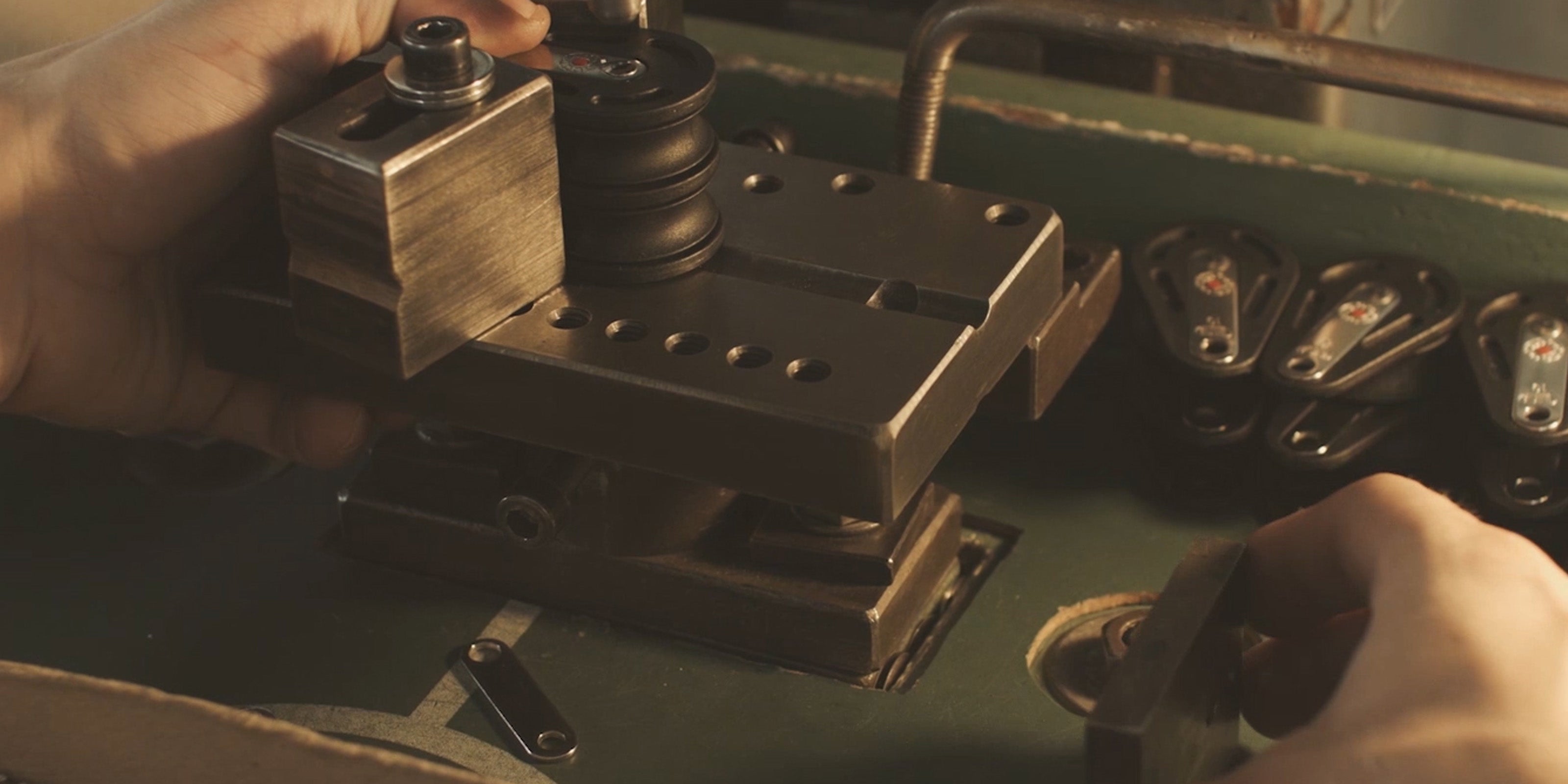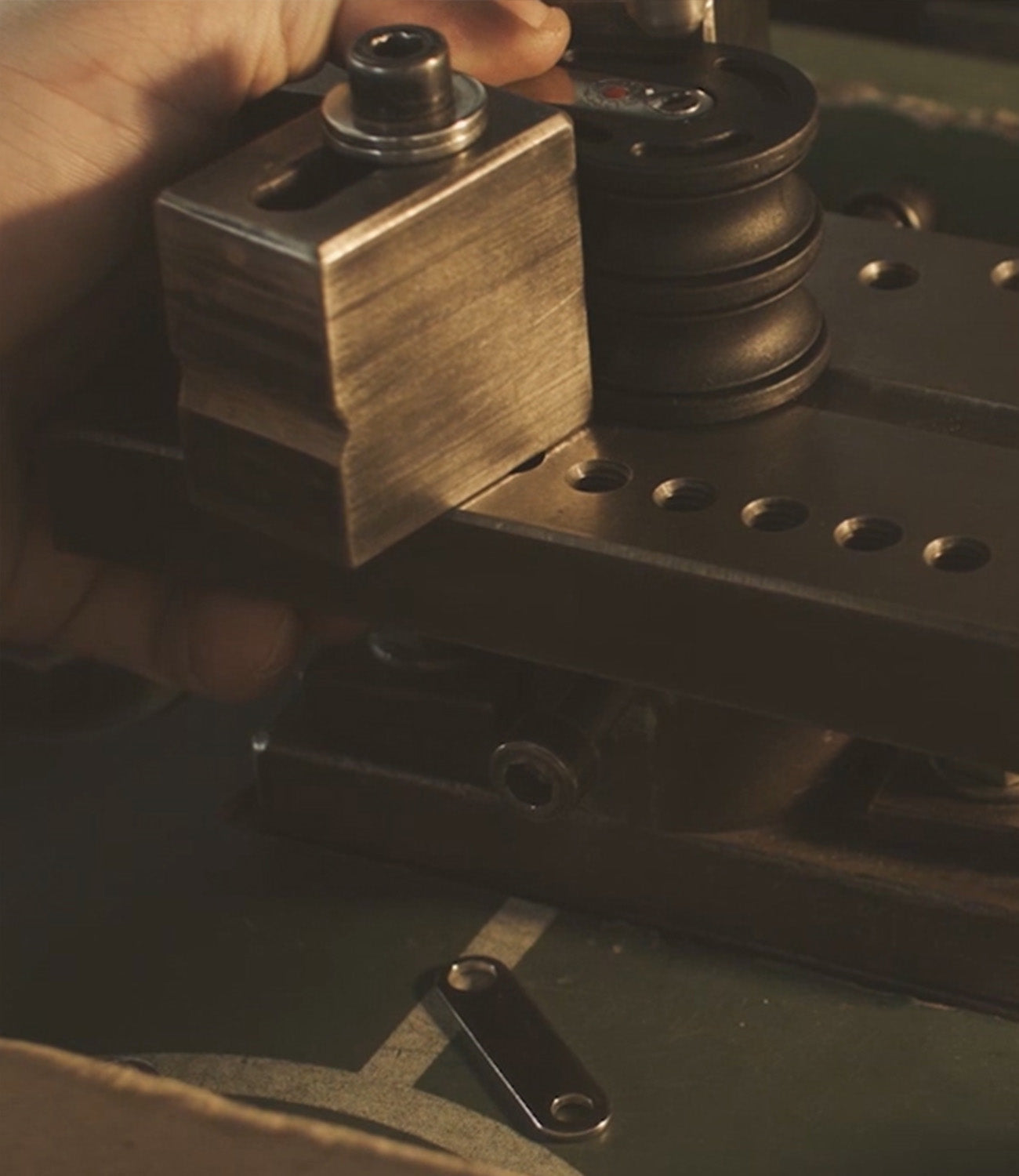What are complete tackles?
Complete tackles are a combination of blocks and ropes, which are intended to make work easier. They are used in many ways as main sheet, stretcher, tree repeater and on the traveller of dinghies. With our Sprenger blocks a wide variety of complete tackles are possible. You will also find a selection of already assembled complete tackles in our assortment.
What are cam cleats for (also called curry clamps) and how do they work?
Cam cleats are designed to enable quick covering and easy release of running material.
By loading the line in one direction, the serrated jaws of the clamp close and block the rope with a special spring mechanism that presses the jaws against the inserted rope. To cast the rope off, pull the end up and it will run free again. The covering at the cleat is therefore not necessary. The cast off happens thereby very fast and the line can be pulled in the occupied condition.
How many FlexDry do I need in winter storage, e.g. for my boat or my caravan?
Cubic meters | Amount Flexdry*
1 | 1
5 | 2
10 |3
50 |13
* Data may vary due to climatic changes.
How is FlexDry disposed of?
FlexDry consists of non-hazardous granules of calcium chloride and starch, so it can be disposed of as household waste.
How does FlexDry work?
FlexDry absorbs up to 200 % of its own weight in moisture. Depending on the ambient climate, this is effective for several months. Moisture absorbed transforms into a gel and is never liquid. Unobtrusive, flexible placement is possible thanks to compact dimensions.
What is FlexDry? Where can I use FlexDry?
FlexDry offers long-term protection against moisture. It reduces high relative humidity in enclosed spaces with little or no ventilation. FlexDry provides protection against mould, corrosion (rust), mould stains, fogged windows or bad odours.
The application range of FlexDry is very diverse. Suitable for boats, caravans, sheds, distribution cabinets, attics, cellars, crawling basements, guest rooms, cloakrooms, garden houses, safes, washrooms etc.
Can I use a wire rope in a standard block?
No way! Most standard blocks use plastic washers that cannot withstand the requirements (steel in the wire rope).
Can I use a wire rope block with a plastic rope?
In most cases, you can use plastic ropes in a wire rope block, because the sheave harmonizes very well with the braided rope.
What advantages does the S block series have comparerd to the old series?
The S-Block series is a continuously improved version of the old series. The design has been revised; the recognition value is high.
The following points have been improved:
- optimal chewing performance due to curved side parts
- form stable continuous stainless steel flap for more stability and safety
- max. Rope thickness and bearing type in the reinforcing tab
- Wobble riveting prevents sharp burrs on rivet head
- Side parts made of high-quality, glass fibre reinforced plastic (UV-resistant)
- Compact design, low overall height
- Also available in needle roller bearings
For which boats are Sprenger fittings suitable?
Sprenger fittings are for boats and yachts up to about 10 m Loa. Here we have a wide assortment.
Loa Length over all = from front to rear fixed point (bow - stern)
Why should I choose Sprenger fittings?
With Sprenger you have the fittings with the best price/performance ratio on the market. In tests conducted by the well-known magazines YACHT and SEGELN, Sprenger blocks were the test winners and achieved the highest scores. The working and breaking loads, the catalogue data in accordance with the actual values and the corrosion resistance were tested.
Perhaps you are familiar with the well-known sailor Wilfried Erdmann. He circumnavigated the earth in about 330 days in 1984. About 20 years later he repeated this one-handed circumnavigation, this time even against the prevailing wind directions. He not only used the same boat for both circumnavigations, but for the most part also the same Sprenger blocks. Is there any better proof of the durability and quality of Sprenger fittings? But our fittings are not only popular with circumnavigators around the world. Sprenger products are also very popular with cruising and regatta sailors.
How do I mount a block correctly?
A block can only function properly if it can move so freely that it always runs in the pulling direction of the rope or wire. If the block cants so that the cordage is applied to the block jaw under load, the block will be damaged. In the worst case, the ropes can get stuck between the suspension and the washer. In turn, jamming the ropes in the block can pose a great danger to the ship and crew. Conversely, appropriate precautions and monitoring of the individual block applications are urgently recommended.
When do I use needle bearing blocks?
Needle bearings - also called roller bearings - are the best bearings for high-quality and loadable blocks. The bearing surfaces are much larger than with balls. They can therefore support higher loads and remain "rollable". Needle roller bearings are therefore used for very high working loads. A needle roller bearing combines the advantages of sliding and ball bearings.
When do I use sliding bearing blocks?
With the simple sliding bearing, the block disc runs on one axis. The disc material consists of nylon or other sliding materials. When using high-quality material and an axle with as large a diameter as possible, these "simple" blocks are very durable, maintenance-free and roll evenly. This type of bearing is particularly suitable for standing loads.
When do I use ball bearing blocks?
Smooth-running ball bearing blocks are very suitable for all areas where lines have to be pulled through quickly and largely by hand. Examples are the single line reefing system or the deflection of sheets, as well as the lines used to haul and fly the traveller. Especially when there is little wind, trimming becomes much more sensitive. The use of ball bearings is a major advantage, especially on small boats, where most of the lines are run out of hand.
What is the meaning of the number on the blocks?
The numbers in the reinforcing straps indicate the maximum rope strength.
What types of bearings are available for the Sprenger blocks?
The Sprenger S-Block series is available in three bearing types.
The bearing type of the block can be seen at first glance in the reinforcing bracket.
Here we find a yellow dot for the sliding bearing, a red dot for the ball bearing and a blue dot for the needle bearing.
How can the blocks be damaged?
Damage to blocks can occur as a result of overloading as a result of undersizing, patent throats, but also as a result of the use of brackets - although a vortex would be fitted. In such a case the block is forced into a rotary motion by the sheet, which cannot be compensated by the missing vortex. As a result, the sheet no longer runs over the roller but into the side part. The resulting forces deform and destroy the block. Therefore - whenever possible - use blocks with vortices.
How do I maintain and control my hardware?
Rinse sand, dirt and salt crystals thoroughly with tap water, especially after use in salt water. All moving parts on blocks as well as sheet clamps, ball bearings, sliding bearings and needle bearings should be greased with marine spray after cleaning.
Check all products before use and replace if necessary in case of damage or wear. Regular cleaning of the stainless steel fittings protects against discolouration which would otherwise occur frequently.
Are Sprenger blocks suitable to be used in salt water?
Yes. Sprenger blocks are suitable for use in salt water. Nevertheless, rust deposits can occur, especially on the rivet and around the riveting area. Unfortunately, this cannot be avoided, but does not affect the quality. These are the smallest/minimum residual particle deposits of the machining tools. However, this "rust build-up" is only superficial and can be easily removed.
What is the difference between the safe working load and the breaking load?
The safe working load indicates the load with which a block can be permanently stressed without becoming inoperative. The breaking load, on the other hand, describes the load at which the object (block) breaks or no longer functions. We recommend a safety factor of at least four.
Example: Breaking load specified in the catalogue: 1000 kg corresponds to a working load of 250 kg (breaking load:4).
This quadruple safety is the basis in the chain industry. I.e. at a determined breaking load of 1,000 kg, for example, 50 % of this is used as the test load. No remaining deformation should occur at this value. Half of the test load is then the safe working load, in our example 250 kg.
How can I recognize Sprenger products?
All Sprenger products are stamped with the HS logo "HS-Germany". This stamp is a recognition feature of every Sprenger product and stands for quality "Made in Germany".

